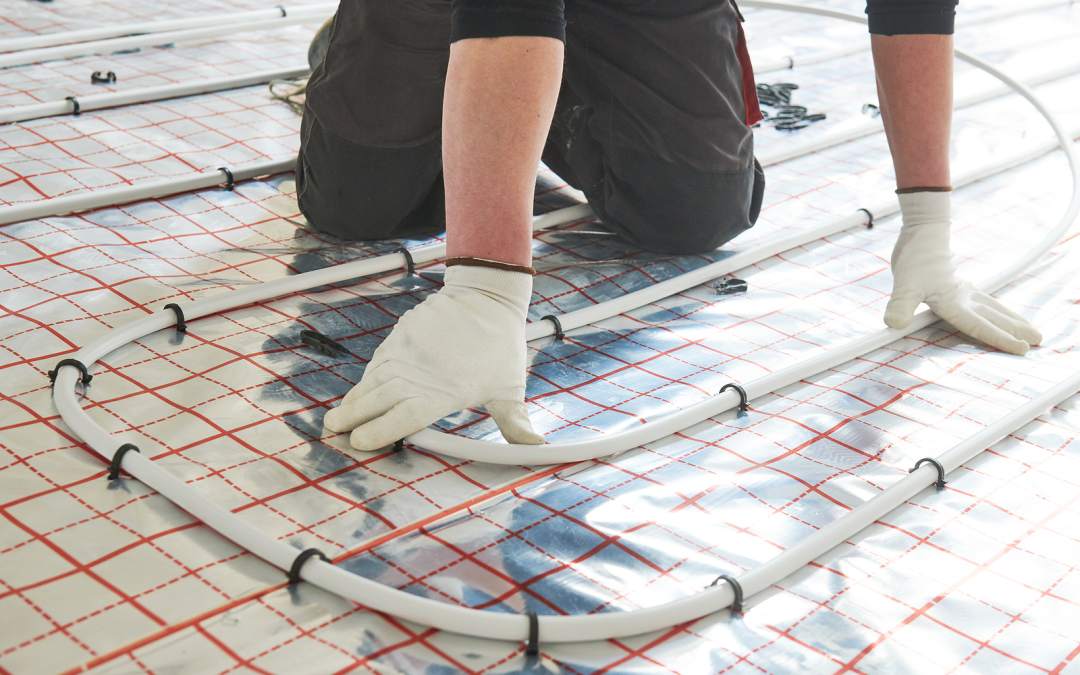Underfloor heating is a wonderful way to keep a house warm. By definition, heat rises, so unless each floor is insulated in a way that prevents this, having the source of heat under your feet means you can keep everything nice and cosy from your toes to your head.
For most people, heating is provided by fires and radiators, which is normal enough and the way things have been done for centuries. The notion of getting underfloor heating may seem like a modern novelty and you could be forgiven for asking why it hadn’t been thought of a long time ago.
What The Romans Did For Us
It may surprise you to learn that, in fact, is that it was. The first underfloor heating systems were not like the electric systems that you may have fitted now, with wires and narrow pipes sealed in concrete screed. Instead, they used real fire but in combination with innovative engineering technology.
It was the Romans who brought this technology to Britain, providing underfloor heating to Londoners when there first was a London at all. The port of Londinium, founded in AD 47, was not even the capital then (Colchester was, although both cities had to be rebuilt after their sackings by Queen Boudicca and the Iceni tribe in 61 AD).
Roughly corresponding to the present-day square mile of the City of London, Roman London soon established some of the creature comforts found elsewhere in the empire, including underfloor heating. The system used was called the hypocaust, which consisted of an accessible cavity under the floor called the suspensura, which was held up on pillars.
Hot air channelled by flues from an adjacent furnace would flow into this gap, seeping up through the floors to warm up and heat the space above. It was, in effect, the world’s first central heating.
This was so effective that it not only made life more pleasant in the colder months of the British winter, but made possible the construction of larger buildings, since the heat could be spread so efficiently. It also meant that while a furnace could be used for other purposes, such as metallurgy to make tools and weapons, the heat it produced was not wasted.
Hypocausts In London And Elsewhere
Archaeologists have found several examples of hypocausts in Roman London, both within the City and further afield as Roman settlements spread around the Thames Valley and beyond.
A prime example of this was the bathhouse at Billingsgate, which was not a large public facility but a private bathhouse, suggesting it was owned by someone of significant wealth and importance. Listed as a scheduled monument in 1952, its hypocaust would have been used to heat the water and provide further creature comforts.
There are many more examples of hypocausts around the south of England close to London. The great thoroughfare of Watling Street passed through Londonium and to the east was Canterbury, where the Roman museum features a townhouse with a hypocaust.
To the north, Watling Street passed through St Albans, where a hypocaust is located close to the Verulamium museum. Other examples of hypocausts can be found all over Roman Britain, even at forts on its northern frontier of Hadrian’s Wall, with bath houses like the one at Segedunum, where the wall reached its eastern terminus at Wallsend.
Modern Underfloor Heating
If you are looking to have underfloor heating installed, it may be quite a thought to be following in the footsteps of the first Londoners nearly 2,000 years ago. Of course, modern systems don’t need furnaces or the extensive space involved in building a suspensura, but today’s designers are standing on the shoulders of Roman giants.
However, if you do get a modern underfloor heating system installed, you can enjoy the same comfort that made cold days so much more pleasant back in the first century, all without the fear that rampaging Celts might try to burn your house down (though Boudicca might be wound up at being misnamed ‘Boadicea’ at her statue by Victoria embankment).
Of course, because it is electric, modern systems will require skilled and well-trained engineers to fit them and it will mean some disruption caused by taking up your existing floor before the new one can be laid with the system embedded into it.
However, the lesson of Roman history in London and elsewhere is that this is well worth investing in. Your home may not still be standing 2,000 years from now, but it is perfectly possible that by then, Londoners will still be keeping their homes warm using what will be a nearly 4,000-year-old invention.

